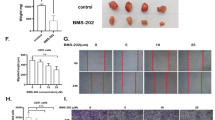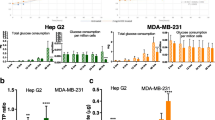Abstract
Glioblastoma (GBM) is an extremely aggressive primary brain tumor with poor prognosis, short survival time post-diagnosis and high recurrence. Currently, no cure for GBM exists. The identification of an effective therapeutic modality for GBM remains a high priority amongst medical professionals and researches. In recent studies, inhalant cannabidiol (CBD) has demonstrated promise in effectively inhibiting GBM tumor growth. However, exactly how CBD treatment affects the physiology of these tumor cells remains unclear. Stress granules (SG) (a sub-class of biomolecular condensates (BMC)) are dynamic, membrane-less intracellular microstructures which contain proteins and nucleic acids. The formation and signaling of SGs and BMCs plays a significant role in regulating malignancies. This study investigates whether inhaled CBD may play an intervening role towards SGs in GBM tumor cells. Integrated bioinformatics approaches were preformed to gain further insights. This includes use of Immunohistochemistry and flow cytometry to measure SGs, as well as expression and phosphorylation of eukaryotic initiation factor-2α (eIF2α). The findings of this study reveal that CBD receptors (and co-regulated genes) have the potential to play an important biological role in the formation of BMCs within GBM. In this experiment, CBD treatment significantly increased the volume of TIAR-1. This increase directly correlated with elevation in both eIF2α expression and p-eIF2α in CBD treated tissues in comparison to the placebo group (p < 0.05). These results suggest that inhalant CBD significantly up-regulated SGs in GBM, and thus support a theory of targeting BMCs as a potential therapeutic substrate for treating GBM.



Similar content being viewed by others
Data availability
The datasets generated during and/or analysed during the current study are available from the corresponding author on reasonable request.
Abbreviations
- BMC:
-
Biomolecular condensates
- BMDCs:
-
Bone marrow-derived cells
- CBD:
-
Cannabidiol
- CNR1:
-
Cannabinoid receptor 1
- CNR2:
-
Cannabinoid receptor 2
- CSCs:
-
Cancer stem cells
- eIF2:
-
Eukaryotic initiator factor
- GBM:
-
Glioblastoma
- IHC:
-
Immunohistochemistry
- p-eIF2:
-
Phosphorylated eukaryotic initiator factor 2
- PPI:
-
Protein–Protein interaction
- SGs:
-
Stress granules
- TIAR-1:
-
T-cell intracellular antigen related protein
References
Le Rhun E, Preusser M, Roth P, Reardon DA, van den Bent M, Wen P, Reifenberger G, Weller M. Molecular targeted therapy of glioblastoma. Cancer Treat Rev. 2019;80: 101896. https://doi.org/10.1016/j.ctrv.2019.101896.
McKinnon C, Nandhabalan M, Murray SA, Plaha P. Glioblastoma: clinical presentation, diagnosis, and management. BMJ. 2021;374: n1560. https://doi.org/10.1136/bmj.n1560.
Khodadadi H, Salles É, Alptekin A, Mehrabian D, Rutkowski M, Arbab AS, Yeudall WA, Yu JC, Morgan JC, Hess DC, et al. Inhalant cannabidiol inhibits glioblastoma progression through regulation of tumor microenvironment. Cannabis Cannabinoid Res. 2023;8:824–34. https://doi.org/10.1089/can.2021.0098.
Jayabalan AK, Adivarahan S, Koppula A, Abraham R, Batish M, Zenklusen D, Griffin DE, Leung AKL. Stress granule formation, disassembly, and composition are regulated by alphavirus ADP-ribosylhydrolase activity. Proc Natl Acad Sci. 2021. https://doi.org/10.1073/pnas.2021719118.
Swain P, Weber SC. Dissecting the complexity of biomolecular condensates. Biochem Soc Trans. 2020;48:2591–602. https://doi.org/10.1042/BST20200351.
Lyon AS, Peeples WB, Rosen MK. A framework for understanding the functions of biomolecular condensates across scales. Nat Rev Mol Cell Biol. 2021;22:215–35. https://doi.org/10.1038/s41580-020-00303-z.
Hernandez-Candia CN, Pearce S, Tucker CL. A modular tool to query and inducibly disrupt biomolecular condensates. Nat Commun. 2021;12:1809. https://doi.org/10.1038/s41467-021-22096-1.
Van Treeck B, Protter DSW, Matheny T, Khong A, Link CD, Parker R. RNA self-assembly contributes to stress granule formation and defining the stress granule transcriptome. Proc Natl Acad Sci. 2018;115:2734–9. https://doi.org/10.1073/pnas.1800038115.
Choi S, Sa M, Cho N, Kim KK, Park SH. Rbfox2 dissociation from stress suppresses cancer progression. Exp Mol Med. 2019;51:1–12. https://doi.org/10.1038/s12276-019-0246-y.
Song MS, Grabocka E. Stress granules in cancer. Rev Physiol Biochem Pharmacol. 2020. https://doi.org/10.1007/112_2020_37.
Huelgas-Morales G, Silva-Garcia CG, Salinas LS, Greenstein D, Navarro RE. The stress granule RNA-binding protein TIAR-1 protects female germ cells from heat shock in Caenorhabditis elegans. G3. 2016;6:1031–47. https://doi.org/10.1534/g3.115.026815.
Jeon P, Lee JA. Dr. Jekyll and Mr. Hyde? physiology and pathology of neuronal stress granules. Front Cell Dev Biol. 2021. https://doi.org/10.3389/fcell.2021.609698.
Silva JM, Rodrigues S, Sampaio-Marques B, Gomes P, Neves-Carvalho A, Dioli C, Soares-Cunha C, Mazuik BF, Takashima A, Ludovico P, et al. Dysregulation of autophagy and stress granule-related proteins in stress-driven Tau pathology. Cell Death Differ. 2019;26:1411–27. https://doi.org/10.1038/s41418-018-0217-1.
Attwood KM, Robichaud A, Westhaver LP, Castle EL, Brandman DM, Balgi AD, Roberge M, Colp P, Croul S, Kim I, et al. Raloxifene prevents stress granule dissolution, impairs translational control and promotes cell death during hypoxia in glioblastoma cells. Cell Death Dis. 2020;11:989. https://doi.org/10.1038/s41419-020-03159-5.
Szklarczyk D, Gable AL, Lyon D, Junge A, Wyder S, Huerta-Cepas J, Simonovic M, Doncheva NT, Morris JH, Bork P, et al. STRING v11: protein-protein association networks with increased coverage, supporting functional discovery in genome-wide experimental datasets. Nucleic Acids Res. 2019;47:D607–13. https://doi.org/10.1093/nar/gky1131.
Zhou Y, Zhou B, Pache L, Chang M, Khodabakhshi AH, Tanaseichuk O, Benner C, Chanda SK. Metascape provides a biologist-oriented resource for the analysis of systems-level datasets. Nat Commun. 2019;10:1523. https://doi.org/10.1038/s41467-019-09234-6.
Xie Z, Bailey A, Kuleshov MV, Clarke DJB, Evangelista JE, Jenkins SL, Lachmann A, Wojciechowicz ML, Kropiwnicki E, Jagodnik KM, et al. Gene set knowledge discovery with Enrichr. Curr Protoc. 2021;1: e90. https://doi.org/10.1002/cpz1.90.
Hao F, Feng Y. Cannabidiol (CBD) enhanced the hippocampal immune response and autophagy of APP/PS1 alzheimer’s mice uncovered by RNA-seq. Life Sci. 2021;1(264): 118624.
Bian YM, He XB, Jing YK, Wang LR, Wang JM, Xie XQ. Computational systems pharmacology analysis of cannabidiol: a combination of chemogenomics-knowledgebase network analysis and integrated in silico modeling and simulation. Acta Pharmacol Sin. 2019;40(3):374–86.
Carrano A, Juarez JJ, Incontri D, Ibarra A, Guerrero Cazares H. Sex-specific differences in glioblastoma. Cells. 2021;10(7):1783.
Acknowledgements
Authors are thankful to Mr. Carter Haynes for his invaluable assistance in professional editing and proofreading of this current manuscript. Further, authors thank ThriftMaster Holding Group for providing the inhalant CBD for this study. Authors also thank Medicinal Cannabis of Georgia for providing help in optimizing the CBD dosage.
Funding
This work was supported by institutional seed funding from the Dental College of Georgia at Augusta University.
Author information
Authors and Affiliations
Contributions
All authors contributed to the study conception and design. LPW, JCY, XQ and BB: Study conception and design, analysis and interpretation of data, and drafting the article., PSC, ÉLS, SEN, HK and BBH: Acquisition of data and drafting the article., AA: Culturing and providing the GBM tumor cell line., KV, VC, DCH, KMD ASA, JG and HMR: Editing and Scientific Contribution., MJR: Clinical interpretation and advice and editing.
Corresponding author
Ethics declarations
Competing interests
(1) Lei Phillip Wang, Babak Baban, and Jack Yu are members of Medicinal Cannabis of Georgia with no financial interest. (2) All other authors declare no conflict of interest. (3)Thriftmaster Holding Group (THG) is the provider of CBD inhalers and has a licensing contract with Augusta University. (4) THG had no role in study design, data collection and analysis, decision to publish, or preparation of the manuscript.
Ethics approval
Animal experiments were approved (protocol # 2011–0062) by the Institutional Animal Care and Use Committee (IACUC) of Augusta University and followed the IACUC guidelines. There was no human subjects/samples used in this study.
Additional information
Publisher's Note
Springer Nature remains neutral with regard to jurisdictional claims in published maps and institutional affiliations.
Rights and permissions
Springer Nature or its licensor (e.g. a society or other partner) holds exclusive rights to this article under a publishing agreement with the author(s) or other rightsholder(s); author self-archiving of the accepted manuscript version of this article is solely governed by the terms of such publishing agreement and applicable law.
About this article
Cite this article
Wang, L.P., Chagas, P.S., Salles, É.L. et al. Altering biomolecular condensates as a potential mechanism that mediates cannabidiol effect on glioblastoma. Med Oncol 41, 140 (2024). https://doi.org/10.1007/s12032-024-02381-x
Received:
Accepted:
Published:
DOI: https://doi.org/10.1007/s12032-024-02381-x




